Search isn’t what it used to be and that’s exactly why Shopify SEO matters more than ever in 2025.
With Google’s Search Generative Experience (SGE) surfacing AI-generated answers directly in search results, your Shopify store has less time and space to make an impression. But here’s the upside: the brands that optimize for real content depth, UX, and trust signals will outperform the ones relying on outdated hacks.
Whether you’re a solo founder or scaling an enterprise eCommerce brand, SEO remains the highest ROI channel to bring in traffic that converts without paying for every click.
In this guide, we’ll walk you through the 7 most important steps to optimize your Shopify store in today’s AI-first landscape. From technical setup and keyword research to content strategy and mobile UX, every tactic here is battle-tested and beginner-friendly.
Let’s future-proof your traffic and make sure your store shows up when (and where) it matters most.
- Step 0: Set Up Technical SEO for Shopify
- Step 1: Optimize Your Shopify Site Structure
- Step 2: Improve the User Experience
- Step 3: Research the Right Target Keywords
- Step 4: Optimize Your Shopify Products Pages
- Step 5: Build Links to Your Store
- Step 6: Rank Higher With Content Marketing
- Step 7: Use the Best Shopify SEO Apps and Tools
How to Improve SEO on Shopify
Follow the seven steps detailed below to improve your Shopify SEO:
Stop losing visitors! Instantly grow your email list, get more leads and increase sales revenue with the best conversion optimization toolkit in the world.Click here to get started →
Step 0: Set Up Technical SEO for Shopify
Before jumping into site structure or keyword research, it’s crucial to lay a solid technical foundation. Technical SEO ensures that your Shopify store is crawlable, indexable, and optimized for search engine performance.
Here are the essential technical tasks to check off:
✅ Submit Your Shopify Sitemap
Shopify automatically generates a sitemap file at yourstore.com/sitemap.xml. This file helps Google discover your site structure and all the pages it should index.
To submit your sitemap:
- Set up Google Search Console.
- Verify your Shopify domain.
- Go to the “Sitemaps” tab and enter:
sitemap.xml
Pro Tip: Check that your sitemap updates correctly when you add or delete product or collection pages.
✅ Edit Your robots.txt File (If Needed)
Shopify gives you access to customize your robots.txt file, which controls how search engine bots crawl your site.
Use it to:
- Block unnecessary parameters (like internal search pages).
- Ensure important pages aren’t accidentally disallowed.
You can edit it by creating a robots.txt.liquid template in your theme. Shopify has official guidance here.
✅ Add Canonical Tags to Prevent Duplicate Content
Shopify automatically includes canonical tags on product and collection pages, but you should still audit for duplication, especially when using filtering or variants.
Use Google Search Console’s URL inspection tool or tools like Ahrefs to check if multiple URLs with similar content are indexed. Canonical tags help consolidate SEO authority to the primary version of a page.
Example:
example.com/products/red-shoes?variant=1234should point toexample.com/products/red-shoes.
✅ Handle 404 Pages the Smart Way
Broken links or deleted product pages can cause 404 errors, which hurt both user experience and SEO if left unchecked.
Fix it with one of these options:
- 301 Redirect old/deleted URLs to relevant new ones via Shopify’s “URL Redirects” tool.
- Custom 404 Page: Add helpful links or a search bar to retain users and reduce bounce.
🧠 For more tips, check out our eCommerce SEO Optimization Guide.
Step 1. Optimize Your Shopify Site Structure
The way your content is organized on your page is very important to SEO success.
When shoppers are able to quickly and easily find the things they’re looking for, they tend to spend more time on your site and view more pages, which can help your search engine rankings.
How can you make your site easier to navigate?
Simplify. Don’t go overboard with categories and subcategories.
A simpler site structure makes it easier for search engines to crawl your site and rank your products.
An SEO-friendly, simple site structure might look like this:
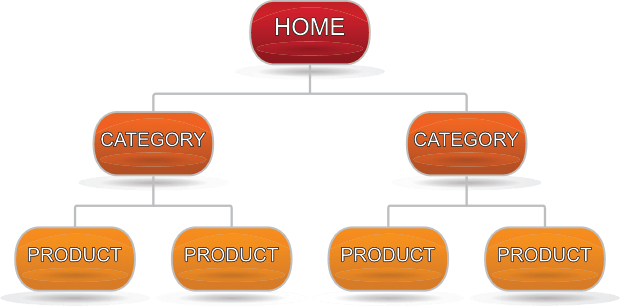
You can see from the diagram that your products are only a couple of clicks away from your homepage, making it easy and fast for shoppers to find what they’re looking for and easy for search engines to crawl the site.
Organizing your content is easy with Shopify, using one of these structures:
Homepage » Category Pages » Product Pages
Homepage » Category Pages » Sub-Category Page » Product Pages
Remember, your site should be built for customers first.
In addition to product and category pages you will need to include an About page and Contact page on your site. These pages let shoppers and search engines know that you are credible and trustworthy, so don’t skip these pages.
Finally, include a search box on your page. Will it help with SEO? Not directly. But it will help visitors find what they’re looking for, which is an important part of eCommerce optimization so you can make more money from the traffic you already have.
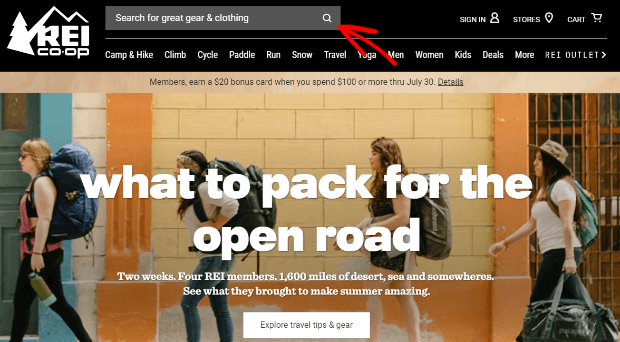
Step 2. Improve the User Experience
Now let’s take a look at a few ways you can improve the user experience on your site, which will also help you to rank higher in search results.
✅ Boost Your Site Speed
Site speed is all about accessibility. When your site is easy to navigate and everything moves quickly, visitors have no cause for frustration. This means that they’re likely to spend more time on your site.
To make your Shopify store faster, you can:
- use a fast, mobile-friendly theme
- use smaller, optimized images
- remove any apps you’re not using
- avoid using sliders
You can see SEMrush’s guide to speeding up Shopify for more tips.
Since 2019, Google has used mobile-first indexing by default. That means the mobile version of your site is now the primary version Google evaluates for rankings. If your store isn’t optimized for smartphones, your visibility—and sales—are likely taking a hit.
Here’s how to ensure your Shopify store is mobile-ready:
✅ Use a Responsive Shopify Theme
All modern Shopify themes are responsive, but some perform better than others in real-world SEO tests.
Recommended Shopify themes for mobile SEO:
- Dawn – Shopify’s default theme, built for speed and mobile UX
- Impulse – Fast-loading, popular among large product catalogs
- Minimal – Lightweight and excellent for clean navigation
Pro Tip: Test your store on multiple devices. Shopify’s theme preview tool lets you see mobile layouts before publishing.
Explore Shopify’s theme store to browse responsive options.
✅ Test with Google Lighthouse
Use Lighthouse (built into Chrome DevTools) to audit how your site performs on mobile. It gives you a performance score and specific tips to improve:
- Tap target size
- Font legibility
- Layout shift (CLS)
- Image load times
💡 Lighthouse is the same tool Google uses to inform Page Experience signals—don’t skip it.
✅ Improve Your Core Web Vitals
These are Google’s three key metrics for site experience:
| Core Web Vital | Target | What It Measures |
|---|---|---|
| LCP (Largest Contentful Paint) | ≤2.5s | Load speed of main content |
| FID (First Input Delay) | ≤100ms | Interactivity |
| CLS (Cumulative Layout Shift) | ≤0.1 | Visual stability |
For Shopify stores:
- Optimize images using Shopify apps like Booster SEO & Image Optimizer
- Lazy-load non-critical sections (e.g., sliders, reviews)
- Avoid large, uncompressed hero videos above the fold
- Minimize use of third-party scripts unless essential
✅ Make Mobile UX Your Priority
Even if your store looks great on desktop, you must design for thumb-first experiences. Consider:
- Sticky “Add to Cart” buttons
- Mobile-friendly font sizes (16px+)
- Easy tap targets (at least 48px height)
- Eliminate full-page popups on mobile (Google penalizes them)
Reminder: You can’t rank well on Google in 2025 without a mobile-first site. Shopify gives you the tools—it’s up to you to implement them.
💬 “We’re now indexing your content with the mobile version as the primary version. If something is missing or broken on mobile, it’s as if it doesn’t exist to Google.”
— John Mueller, Google Search Advocate
🟩 Source: Google Search Central Blog
Step 3. Research the Right Target Keywords
No Shopify SEO guide would be complete without tips on keyword research – the foundation of SEO success.
But how do you find the right keywords to get traffic to your shop?
The best way to start isn’t with fancy tools, but just to make a list of at least five main topics that your customers care about and that are closely related to your product.
Put yourself in your customers’ shoes. What search terms would YOU use to find the products you sell?
You can also find inspiration for these topics from places like:
- your own buyer personas
- searching forums and subreddits related to your products
- social media hashtags related to your products
- looking at the titles, meta descriptions, and image alt-text used on competitors’ sites
See our complete guide to keyword research for more ideas, and then check out these keyword research tools to expand your keyword list.
Step 4. Optimize Your Shopify Products Pages
At this point, you should have a list of keywords and a logical site structure. The next step is to optimize your store’s pages using your keywords.
Start with your top pages first. These will likely be your homepage, main product collections, and top-selling product pages. We’re talking the pages that are the most profitable and have the best conversions.
If you’re opening a brand new store, you should still optimize your homepage. There are a couple of easy ways to choose which other pages to optimize:
- Pages for the products that generated the most buzz building up to the launch of your store
- Pages for the products related to the most searched keywords you found (> 10K searches/month)
How to Optimize Title Tags for Categories
Now that you know what pages you’re going to optimize first, let’s decide how we want to name our pages across the entire site.
You should use your keywords in a consistent way, like in this example formula:
Keyword 1 – Shop for Keyword 2 – Store Name
Unicorn T-shirts – Shop for Unicorn T-shirts Online – The Store
How to Optimize Title and Meta Description for Products
Next, we need to write some titles and descriptions for our products and categories. Yes, you can use marketing copy from supplier websites, but your customers and SEO will thank you for original content.
Your keywords should fit into the copy naturally. If they sound awkward or are difficult to work into the flow, you may want to reevaluate your chosen keywords.
The alt text for images can also be optimized for SEO, but even this needs to fit naturally.
Check out our ultimate guide on where and how to use keywords in your content for more Shopify SEO tricks. And don’t forget to spend some time on your “out of stock” pages.
Step 5. Build Links to Your Store
Backlinks are used by search engines to determine how the wider community values your site. Think of it as word of mouth for SEO. It’s an off-page optimization strategy that relies on establishing your credibility and trustworthiness.
How can you get links to your store? Here are a few tips:
✅ Supplier/Manufacturer Links: If you sell products made or supplied by established companies, they may have a policy that authorized retailers can get a link. Email them to ask if they will link to your store.
✅ Industry/Influencer Voices: Reach out to industry leaders and influencers for interviews to generate both links and content.
✅ Mentions: You may already be mentioned in several places without being linked. You can use mention.com to find these mentions. Then, send an email asking them to link to your site with the mention.
✅ Broken Links: This requires a little bit of detective work to search out for broken links for products and services similar to those you offer. Once you find one, reach out to the owner of the site displaying the broken link to have them link to your site instead.
Since broken links can hurt SEO this is a mutually beneficial solution for both parties; they get to repair a broken link and you get a backlink.
We also have an ultimate guide to link building with plenty more strategies you can use to rank higher.
Step 6: Rank Higher With Strategic Content Marketing
Product pages alone won’t build your brand or dominate search results. To stand out in 2025’s AI-powered, zero-click world, you need a content marketing strategy that’s both deep and connected.
Here’s how to build an SEO-driven content engine for your Shopify store:
Build Topic Clusters Around Buyer Intent
Topic clusters help you dominate entire search verticals and not just individual keywords. Here’s how to build one:
- Start with a Pillar Page: A comprehensive, evergreen guide targeting a high-volume keyword like
👉 “How to Choose the Best Running Shoes” - Support It with Cluster Content: 6–10 related blog posts that explore subtopics in-depth:
- Best running shoes for flat feet
- How to clean your running shoes
- Trail vs road running shoes
- What is heel drop?
- Running shoe sizing guide
- Running shoe maintenance checklist
- Link All Cluster Posts Back to the Pillar Page (and vice versa)
This tells Google your pillar page is the authority—and helps SGE models extract clean topical relevance.
🧠 Use a visual diagram plugin or table of contents block to connect related posts and improve UX.
Link Blog Content to Product Pages (the Right Way)
Most Shopify blogs fail here. Don’t treat your blog as a silo.
Instead:
- In every blog post, contextually link to relevant product or collection pages
- Use descriptive anchor text, not just “click here”
✅ “Check out our breathable trail running shoes for rugged terrain” - Add “Shop the Look” or “Recommended Gear” sections inside blog posts
Example: On a post about “Choosing the Right Yoga Mat,” link directly to your top-selling yoga mats, not just the homepage.
This improves user experience and distributes SEO value to your product pages.
Create a Long-Term Content Plan Based on Search Intent
Use tools like SEMRush, Ahrefs, or even Shopify’s own search bar to research real customer questions. Then, map them by intent:
| Intent Type | Content Example |
|---|---|
| Informational | “What is zero-drop in running shoes?” |
| Navigational | “Best minimalist shoes for trail running” |
| Transactional | “Buy eco-friendly running shoes” |
| Post-purchase | “How to break in your new running shoes” |
This strategy makes your blog not only rank—but convert.
📌 Need content ideas? Check out our 50+ blog post ideas for eCommerce.
Step 7. Use the Best Shopify SEO Apps and Tools
In this section, we’re going to cover 5 tools and Shopify apps that you can use to boost your site’s rankings.
1. Plugin SEO
- Multilingual
- Constantly updated as search engines change
- Automatically checks your shop and alerts you of problems via email
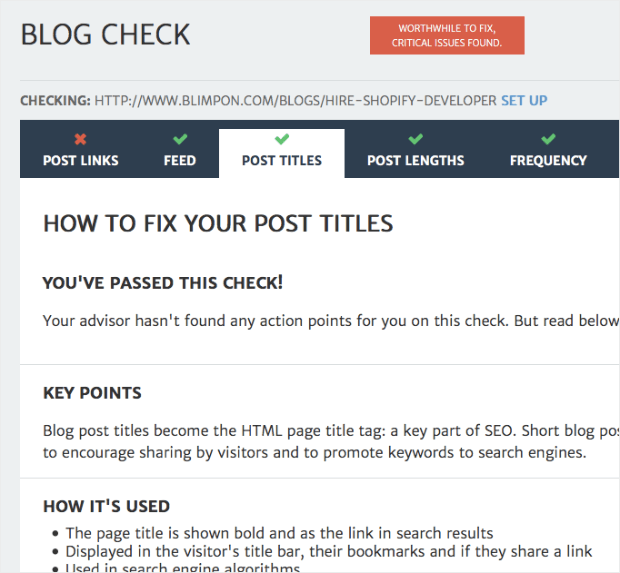
This Shopify app helps you target the SEO issues that are worthwhile to fix, helping you save time and money while still improving your SEO. It provides automatic, regular checking of page titles and headings, meta descriptions, speed, content, article structure, and more, all to make sure that your site is as optimized as it can be.
2. Smart SEO
- Cut down on time spent optimizing your site
- Eliminates the need to manually enter meta tags or alt tags
- Provides structured data to Google and other search engines to enhance search results
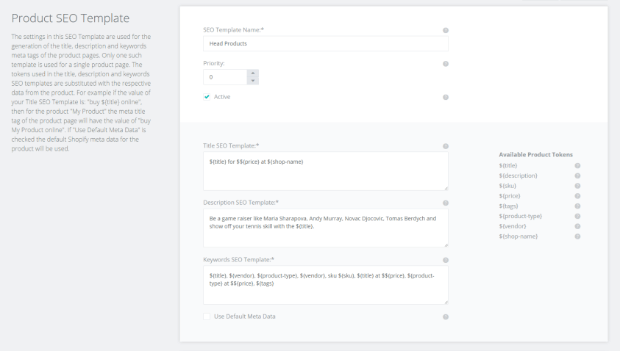
Smart SEO lets you generate relevant meta tags for product, collection, blog, and article pages in your Shopify store, as well as alt tags for product images, without having to make each edit manually. Additionally, the app gets your store information to search engines using JSON-LD data already structured in the way search engines need.
3. Booster SEO & Image Optimizer
- Increase traffic from Google image search
- Quickly and easily optimize images
- No coding knowledge necessary
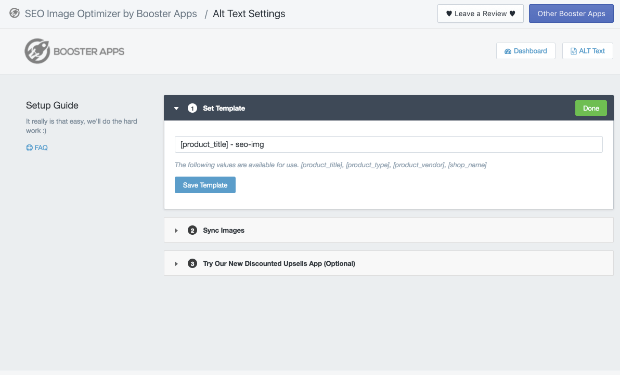
Images are generally what sell your products, so it’s important to have plenty of them on your site. Of course, quality images can also be resource hogs, so you’ll definitely want to use an image optimizer like this one to keep your site speed up.
4. Yoast
- Check all pages and posts for SEO strength and get recommendations for improvement
- Edit multiple pages with a single click
- Always updated for Google’s algorithm
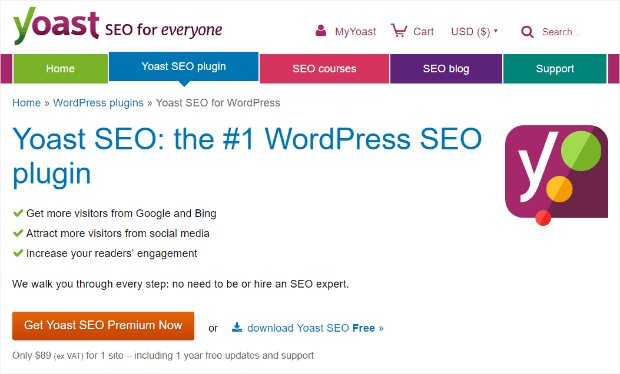
Yoast makes it really easy to optimize your site using the keywords that you choose.
5. SEMRush
- See competitors’ top keywords
- Find out which keywords your competitors rank for
- See which pages on competitors’ sites are getting the most organic search traffic
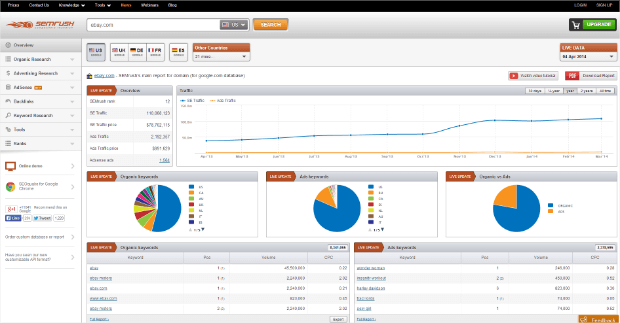
SEMRush can help you find overlooked and underused keywords that you can use to increase traffic and conversions.
Unlock the Full Potential of Your Shopify Store with OptinMonster
While optimizing your Shopify store for search engines is a crucial step towards achieving online success, it’s just the beginning.
As highlighted in the article, SEO practices can drive organic traffic to your store, but converting that traffic into loyal customers is where the real challenge lies. This is where OptinMonster comes into play.
OptinMonster is not just about driving traffic; it’s about optimizing that traffic for maximum conversions.
With its state-of-the-art lead generation tools, you can create targeted campaigns that resonate with your audience, ensuring that visitors not only stay on your site longer but also take desired actions, be it signing up for a newsletter or making a purchase.
Moreover, OptinMonster’s lead verification system ensures that you’re capturing genuine leads, reducing bounce rates, and enhancing your store’s credibility.
By integrating OptinMonster with your Shopify store, you’re not only improving your SEO but also ensuring that every visitor counts.
In conclusion, while SEO lays the foundation for your online visibility, tools like OptinMonster help you build on that foundation, turning visibility into profitability.
So, if you’re serious about maximizing your Shopify store’s potential, it’s time to harness the power of OptinMonster. Elevate your e-commerce game and watch your sales skyrocket!
Shopify SEO FAQs
1. Is Shopify good for SEO?
Yes, Shopify is generally considered good for SEO. It provides several built-in tools and features that support SEO practices, such as customizable headings, titles, meta descriptions, automatic sitemap generation, and robots.txt files. Shopify also supports SSL for all its stores, which is a factor Google uses for ranking.
2. What is SEO Shopify?
SEO for Shopify refers to the process of optimizing your Shopify online store for search engines to increase visibility and drive more organic traffic. This includes optimizing store content, enhancing site structure, improving user experience, and utilizing Shopify’s built-in SEO-friendly features like editing title tags, meta descriptions, and URLs.
3. Can you do SEO on Shopify?
Yes, you can perform SEO on Shopify. The platform allows for various optimizations, such as editing the title tags, meta descriptions, and URLs for your products and pages. You can also improve site speed, make use of blogging capabilities, optimize images, and build backlinks to enhance your store’s SEO.
4. How much does Shopify SEO cost?
The cost of Shopify SEO can vary widely depending on several factors, including your store’s complexity, your industry’s competitiveness, and whether you do it yourself or hire an SEO professional. Basic SEO improvements can be made at little to no cost using Shopify’s built-in tools, while professional SEO services can range from a few hundred to several thousand dollars per month.
5. Which SEO is better: WordPress or Shopify?
Both WordPress and Shopify have strengths in SEO, but the best choice depends on your specific needs. WordPress, with its vast array of SEO plugins like AIOSEO, offers more flexibility and control over SEO elements. Shopify, on the other hand, provides a more user-friendly platform with essential SEO features built in, making it easier for store owners who prefer a less hands-on approach. Generally, WordPress might be better for those seeking deeper customization and control over SEO.
6. How do I check my Shopify SEO score?
You can use SEO audit tools such as Ahrefs, SEMrush, or Moz to check your Shopify SEO score. These tools can scan your Shopify store and provide a detailed report on your SEO health, including issues and areas for improvement. Additionally, Google’s Search Console and PageSpeed Insights are valuable tools for assessing aspects of your site’s SEO performance and speed optimizations.

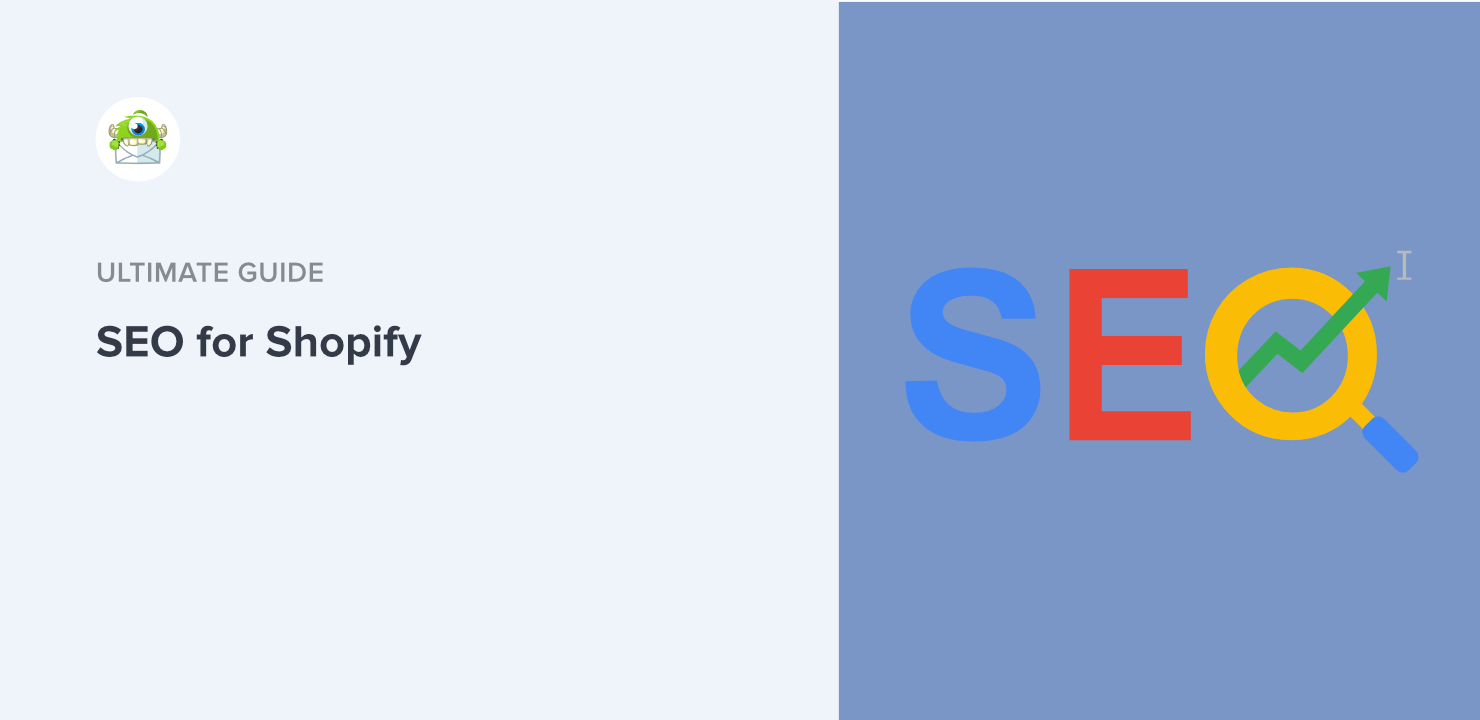
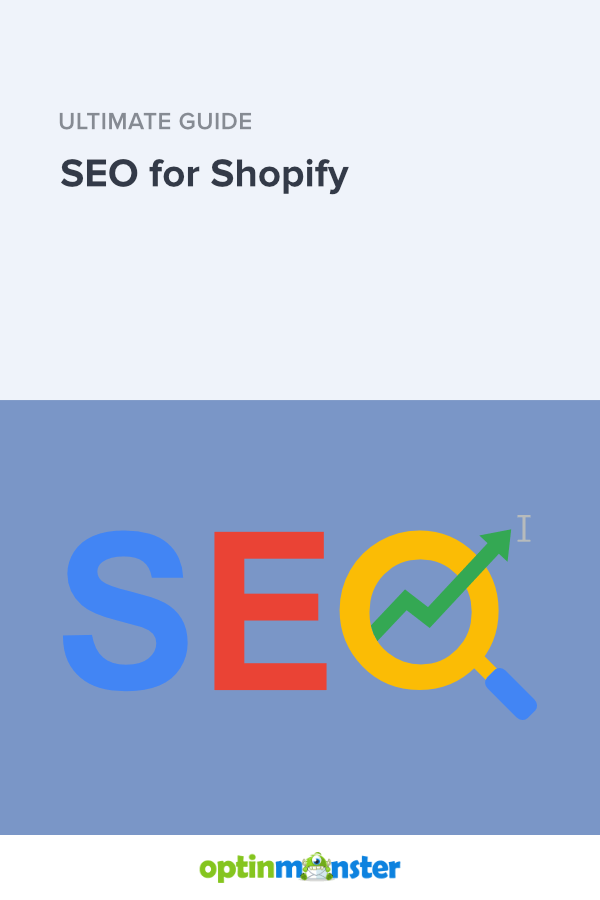
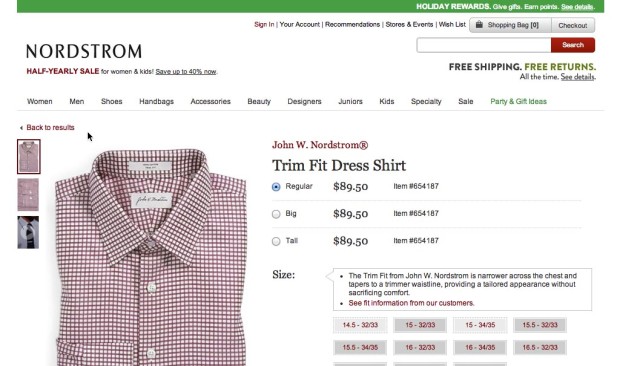
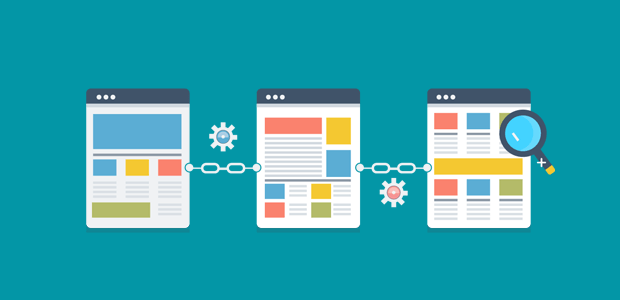





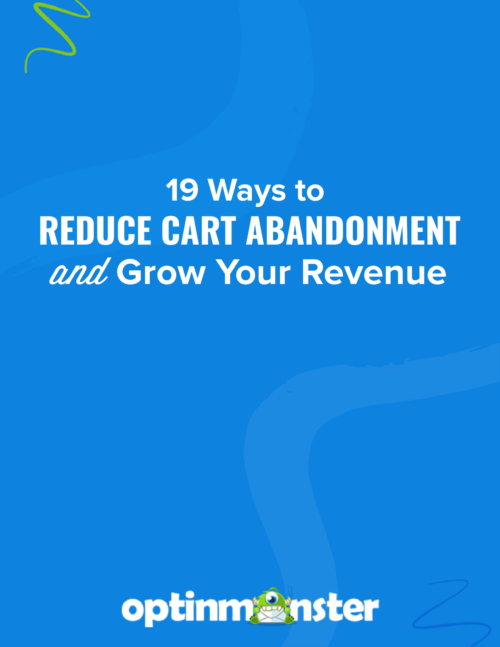



Add a Comment